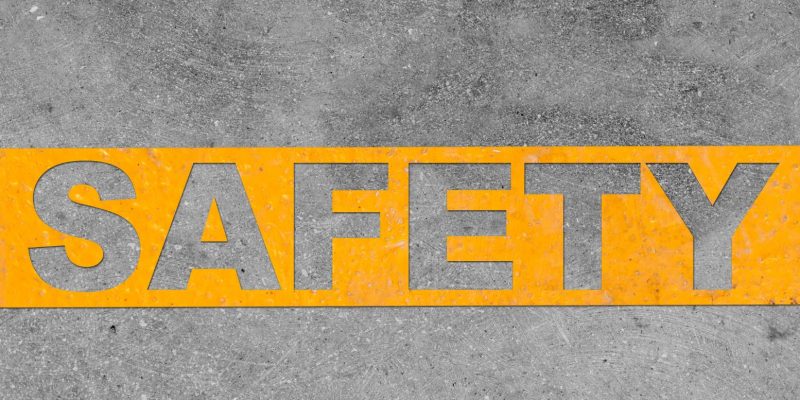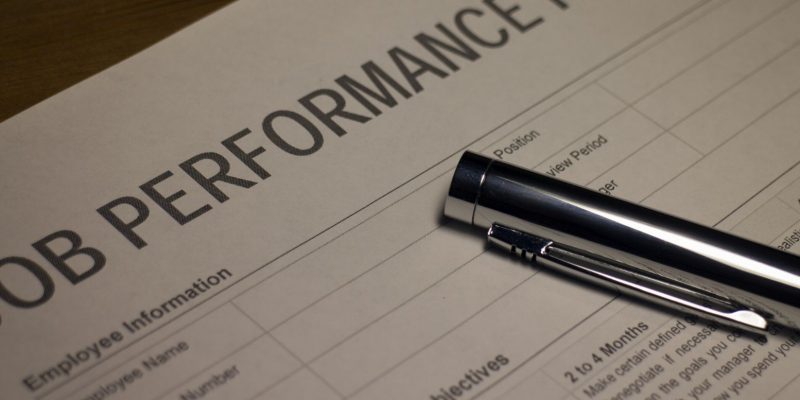Do you secretly cringe when you hear the word 'resilient'? But you need your team to be resilient, rather than falling apart at the slightest knock. What can you do to lead your way through the resilience backlash, why has it become such a dirty word, and what's the antidote?
What You'll Cover Today On How To Lead Your Way Through The Resilience Backlash:
- Why there's a not-so-quiet backlash against resilience
- How resilience becomes toxic
- Why this is one of the two biggest predictors of burnout
- The 3 pillars of burnout & how they contribute to toxic resilience
- What's the antidote? And how could you make a start on that today?
Listen Now:
Get On Clare's Soultuitive® Leaders VIP List
Free & fabulous, fortnightly inspiration straight to your inbox. Plus get subscriber-only bonus strategies and treats:
Essential Resources From Today's Episode:
Join In The Discussion
Take Action Now!
If you do one thing as a result of this episode, make it this! What one action could you take today to address toxic resilience?

For My Organisation
What could you do to shift away from toxic resilience in your organisation?

Prefer To Read? Here's The Transcript:
This text was AI-generated, please excuse any spelling mistakes.
Hello and welcome to Episode 31 of the Soultuitive Leaders podcast. Today is for you if you are a line manager and you secretly cringe when you are told to be resilient, but you need your team to be resilient rather than falling apart at the slightest knock, what can we do about the resilience backlash? Why has it become such a dirty word? And what does the research say about its harmful role in burnout?
We're going to look today at how we can do this healthily and overcome the resilience backlash. So what we're going to cover today, we're going to look at why there's a quiet backlash against resilience, how resilience becomes toxic, why this is one of the two biggest predictors of burnout, according to our two and a half year burnout research study. We'll look at the three pillars of burnout and how they contribute to toxic resilience and what is the antidote and how could you make a start on that today? So here's the problem. There was a huge amount of talk over the last three years with COVID, lockdowns, everything else about how we needed to be resilient.
But I remember a client about 18 months ago saying to me, when they were booking me for an Imposter Syndrome keynote, whatever you do, don't mention the word resilient or people will immediately get off the call. And this was with a huge international consulting firm. Their teams were sick to the back teeth of being told to be resilient. And then last year, I was readily being approached to give keynotes on my natural resilience method, but I was turning them down whenever the client was asking me to teach resilience in the form of mental toughness and being able to bounce back. You see, there's this judgement with the word resilience, where people feel they're being asked to be stronger than they can.
And one of the ways I define burnout when I'm researching it or teaching solutions to it, is it's not a sign of weakness, it's a sign of having been strong for too long. One of my favourite songs, much to my teenage son's consternation, is Friction by Imagine Dragons. I love to play that very loudly in the kitchen on a Saturday evening, and one of the lines in there is, don't tell me to be strong. You can't fight the friction, so ease it off. And this is the problem.
Resilience has become toxic. And toxic resilience creates friction, stress, conflict, worry. It triggers the fight, flight, freeze response. It leaves people feeling scared of threats and constantly on the lookout for danger. It's a toxic resilience I define as that bounce back, gritted teeth resilience, where you feel you've got to push on through and pretend you're okay and just push harder.
It can come in many forms. It can be the boss who expects you just to bounce back after a client meeting where maybe you've been criticised or you're meant to show up on a Thursday morning, having worked super late on the Wednesday and feeling exhausted. Or as happened with one of my clients last year, you've got a workplace so high that you don't even feel you can spare a minute to go for a bathroom break in between meetings, and you can go a whole day without eating or drinking anything. Then if we look at our wider organisations like the NHS, toxic resilience is where people are having to work double shifts to cover for each other. Things are constantly in crisis.
Yeah, it was one of the dictionary's words of the year: perma-crisis is a symptom of toxic resilience. Bounce back, gritted teeth, pushing on through. I want to invite you to try something out with me. Just humour me here for a moment.
Make sure you're safe to do this little exercise. Okay? Grit your teeth. Imagine you've got to push on through. You've got to show this determination and this willpower if that's something at work, try it now and notice what happens to your body and what happens to your thoughts.
And now I invite you, so long as you're not driving or operating machinery, to close your eyes if that feels comfortable for you. And take three deep, sighing breaths with me. Breathing in through the nose and out with an 'aaaah' through your mouth. One more breathing in through the nose, in through the nose.
This time bringing your shoulders up towards your ears as you breathe out. Just letting them drop.
And now waggle your jaw gently from side to side, maybe open and close your mouth a few times, having released that tension, those gritted teeth, what shifted. Now, if we did this exercise in a room together, most people would be telling me right now that when they gritted their teeth, they found the whole of the rest of their body tensed and their thoughts suddenly became stress thoughts, maybe faster and mind story, drama, catastrophising. What if and what could go wrong. And when you do those three simple breaths and relax the jaw, the rest of the body starts to relax. The thoughts slow, they calm down.
And at a neuroscience level, it's easier to concentrate. You're less likely to make mistakes. You're going to be more efficient, more effective, more creative. When we have to be resilient and bounce back, we are constantly stuck in the fight, flight, freeze response from the sympathetic nervous system, pushing on through. From a physiological point of view, this impacts our performance, our productivity, our relationships, what we eat, our sleep.
And for many people, their workloads are simply too high and there's too much juggling, both inside and outside of work. We talked in last week's episode about how 23% of people are thinking of quitting every single week due to burnout. My ongoing research study into burnout has shown that there is a direct link between burnout and toxic resilience. It is one of two super big predictors of burnout, the other one being imposter syndrome. So there's a backlash against resilience.
People are fed up with being told just to take more, one more knock, bounce back, pretend you're okay. They are hitting their limit. My favourite Italian word is basta. Enough basta. They're reaching their basta point where they're going to quit and a lot of them are disengaging already.
It's been called quiet quitting. Whether or not that's a fair word, fair term for it, is another topic for probably another episode. But people feel like they're just having to put up with too much and pretend it's okay. So there's an antidote to this is instead of the gritted teeth and the pushing on through, we need to look more at getting in flow. So if you imagine a cactus, it can survive harsh conditions, but you wouldn't want to hug it.
Being in flow, on the other hand, could be compared to a river. It flows smoothly and effortlessly and it brings life and growth to the environment around it. Toxic resilience keeps us stuck in survival mode. Being in flow allows us to thrive. So I'm seeing a lot of organisations starting to tackle this, which is wonderful to see.
We do have some challenges here, though, because a lot of the work that's being done is fixing the symptoms, not the actual causes, of the toxic resilience. Things like duvet days, beanbags in meeting rooms, mindfulness apps, they're all great in that moment for a little bit of distressing, but they're not removing the trigger that causes the toxic resilience. I'm also seeing incredible work being done in organisations training, mental health first aiders, for example. This is brilliant, but by the time a mental health first aider is needed, the horse has definitely bolted. We need to be doing work much further upstream to prevent the need for toxic resilience so that people can be who they really are and thrive.
And this means we need to be looking at the three pillars of burnout and how they contribute to toxic resilience. One of the biggest things they trigger is something called hyper-vigilance, where the nervous system gets stuck in high alert. We're actually going to cover that in next week's episode. We're going to teach you about the hyper-vigilance triangle, how to spot the warning signs and how to get out of it. And to truly clear toxic resilience from an organisation and from the employees, we need to look at those three pillars of burnout.
If you've not listened to my episodes on burnout yet, those three pillars are the culture, the environment and the habits. So a company or an organizations culture can allow toxic resilience to thrive. I was doing some interviews over the summer and asking people about, have you ever had a toxic manager? There was not a single one who didn't immediately look at me and just go, yes. And most of them said, still.
I've worked with people on my stepping up to lead programme, for example, where the big trauma that they were needing to clear out that had caused imposter syndrome was being stuck with a toxic line manager in a toxic resilience environment where they felt they had to keep bouncing back and pushing down the pain and pretending that they were okay. And this had actually created long term trauma for them. And with both of them, this was over a decade before. So toxic resilience is like a car running on empty. The organisation and the teams keep moving forward, but it's not sustainable and it's likely to break down eventually.
Being in flow, on the other hand, is like a car with a full tank of fuel. It runs smoothly, efficiently and can go the distance. So I'm on a bit of a mission with this one. We need to be preventing the need for toxic resilience rather than teaching teams. Mental toughness work should never feel like being in the SAS.
So what's the antidote and how can you make a start on that? Today? It's about getting back in flow. We need to address the culture that's demanding toxic resilience. That might mean some deep conversations with the leadership team.
It needs to be modelled from the top, all the way down. We need to look at the working environment. What is it about that the physical embodiment of the culture on a day to day basis that could be leading to toxic resilience or the expectation of it. And we need to look at the personal habits that we have that we've picked up, for whatever reason, that mean that we're susceptible to toxic resilience. If you're looking at this from an organisational point of view, I actually have an assessment that we've developed from our research studies over the last 20 years that gives you your toxic resilience scale score for your organisation and we can help you to develop an action plan to clear that out once and for all.
But most people don't get to work with me at that level, so I have things that you could start applying today. I've developed the natural resilience method. It's a five-step programme you can have a free training course on it called the Natural Resilience Method kickstarter. The link is in the show notes and these five steps are designed to work firstly on the habits pillar, then to support people moving on to changing the environment and the culture.
We can also work on a culture level with the hope matrix to be able to clear out toxic resilience patterns once and for all. So the five steps of the Natural Resilience method, you start by being able to press pause on the stress cycle and the hyper-vigilance. It's work to reset the fight flight freeze response in the body, because if you're stressed and you're looking for threats and you can barely breathe, your breathing is up in the upper chest and your shoulders are up by your ears like earrings. It's really hard to make change. This is about being able to reconnect with your body in a way that feels safe, being able to get grounded and to press pause on the stress.
The next step is taming your inner Critic, learning how to choose which thoughts to feed using the magic of neuroplasticity to be able to rewire your brain. To start turning your inner Critic into a genuine cheerleader without whitewashing and pretending. Rewriting those neural pathways and reprogramming the brain's philtres to get back in balance, to see what's going well as well as what might not be. Step three is actually then one of the most important steps that most people haven't come across is being able to clear the body's addiction to adrenaline. If somebody's working in a toxic resilience environment, they will have been running on adrenaline for a very long time, stuck in that fight flight freeze response.
One of the biggest causes of burnout is actually somebody having experienced too much of stress hormone for too long. Yeah, they've been too strong for too long. And my work as a meditation and a yoga teacher, in addition to the rest of the stuff I do, shows that there are things you can do in the nervous system to truly, deeply, safely reset that. So that is step three of what we work on. Step four is then about resetting toxic boundaries and reclaiming your personal power.
Being able to say no without peeing everybody off, being able to look at where the energy vampires are in your life and to it's not about telling people to get lost. It's about being able to communicate in a way that gives you back your power to choose. And then step five is looking at consciously creating your future. Once you've got grounded, dumb work with your inner critic, cleared the body's addiction to adrenaline, and you've been resetting those toxic boundaries. What does flow look like to you?
What does fun look like to you? How could you have more impact? What do you want to do? Who do you want to become? And this process isn't a once and done.
It's like layers of an onion. You can go through it as many times as you want to using deeper techniques and strategies every time. And it's actually the process I also teach not just to clear burnout and toxic resilience, but to deeply and permanently clear imposter syndrome. So my imposter syndrome first AIDS and my imposter syndrome master coaches are all absolute experts in teaching you this. So if that sounds interesting to you, go and make sure you've got my Natural Resilience Method.
Kickstart Course link is in the show notes. It's yours as my gift. And make sure you've also taken my burnout score card. This gives you your score both overall on your burnout risk and against each of those three pillars the culture, the environment, and the habits. And it gives you a personalised action plan.
Again, free is my gift. To find out more about toxic resilience, go and read my Burnout research study. White paper link is in the show notes and if you want to be able to really press reset, you might love my Meditation Made Easy course. So one of the things I'm very aware of is when somebody's close to burnout or they've struggled with toxic resilience, or they're stuck in overthinking, the last thing in the world you want to do is sit in silence with your monkey mind going absolutely haywire. So this is a meditation course for people who hate meditating.
For people who are too busy, it makes it super easy. And students over gosh the last 810 years now, so many students have told me it's changed their lives forever. It helps you to set yourself free from toxic resilience and it helps you to then take actions from that inspired place of flow to change the environment and the culture. Again, the link to that is in the show notes. And if this is resonating with you, and you are on a mission to clear toxic resilience from your organisation, let's have a cup of tea.
There's a link in the show notes to book a call with me. So that wraps up what I wanted to say today on Toxic resilience. Please, please, please. If you're using the word resilient with your team, be aware that it now comes with baggage. And if you find yourself experiencing toxic resilience, or being expected to bounce back and pretend everything's okay, when it's not, make sure you reach out and get the help and support you need.
We're discussing this over on LinkedIn. The link to that discussion thread is below at the bottom of the show notes. And above all, know you are not alone. If you've been experiencing toxic resilience, please get yourself help and support, even if that's dropping a member of my team a message to see how we can support you and know that this is incredibly common at the moment and it's absolutely fine not to be okay with it. I will be back next week with episode 32, where we're going to be looking at the hypervigilance triangle, which I've developed from my research studies, and I hope you have an amazing, amazing week.
Loved This? Want More?
Make sure you're getting my fortnightly Soultuitive® Leaders newsletter (you can grab your spot below) and also subscribe to the podcast https://soultuitive.captivate.fm/listen.
Demystifying How To
Lead From Your Heart
In A Head-Based World
With courage, confidence and passion.
Clare Josa's Soultuitive® Leaders newsletter inspires you to have the impact your ideas and dreams deserve, with less effort and more fun.
It's free, fabulous, and fortnightly on Fridays:

And you can catch past episodes of the Soultuitive® Leaders podcast here:






 sandwich, or implementing flawed company policies like everyone needing to have some negative feedback, to improve.
sandwich, or implementing flawed company policies like everyone needing to have some negative feedback, to improve.
